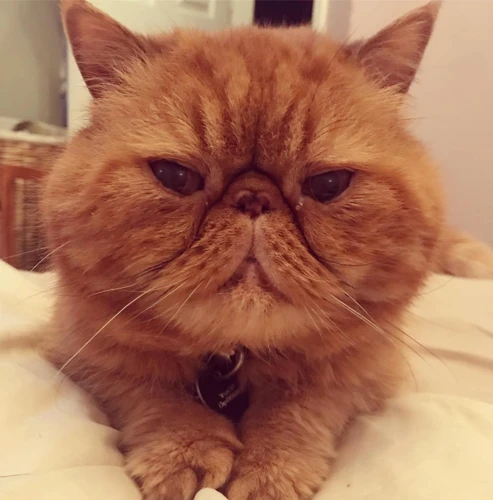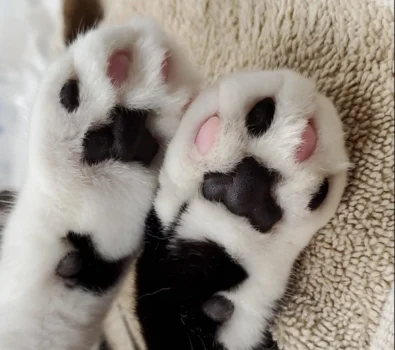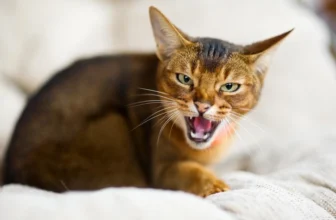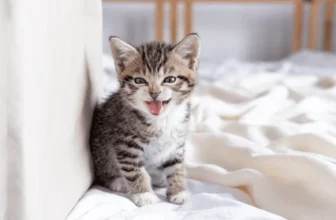As cat owners, we all know the struggles of keeping our furniture and belongings free from scratch marks. While declawing may seem like an easy solution, it is a controversial practice that is not only detrimental to a cat’s well-being but also illegal in many countries. But fear not! There are several alternatives to declawing that will keep your American Wirehair happy and your furniture intact. From diligent nail trimming to providing toys and scratching posts, we’ve compiled a comprehensive list of solutions to help ease your woes.
Understand Declawing

Understanding the Practice of Declawing: What You Need to Know
Before looking into alternatives to declawing your American Wirehair, it’s important to first understand what declawing entails, as well as the reasons why it has become such a controversial topic. Declawing is a surgical procedure that involves the amputation of a cat’s toes at the first joint. The primary reason why some cat owners choose to declaw their pets is to prevent them from scratching furniture and other household items, but this practice has been widely criticized by animal rights advocates and veterinary professionals alike. To learn more about the reasons why declawing is so controversial, be sure to check out our detailed coverage below. Additionally, if you’re looking for tips on how to prevent your American Wirehair from scratching furniture, you may want to read our article about why American Wirehairs scratch furniture and how to prevent it.
What is Declawing?
Declawing is a surgical procedure that involves the removal of a cat’s claws. This procedure is usually done to prevent cats from ruining furniture, scratching humans, or to stop them from hunting prey. However, it is important to understand that declawing is not a simple nail trim. It is a serious surgery that can cause significant pain and long-term side effects.
The procedure involves amputating the last bone of each toe, which can lead to chronic pain, nerve damage, and other problems. Declawing can also affect a cat’s behavior and ability to defend itself. As a result, many animal organizations strongly oppose declawing, and some countries and cities have even banned the procedure entirely.
If you’re considering declawing your American Wirehair, it’s important to understand the risks and alternatives. Instead of declawing, there are several alternatives that can help both you and your cat live happily and peacefully in your home.
One alternative that can help prevent furniture scratching is diligent nail trimming. Keeping your cat’s nails trimmed can help reduce the damage that they might cause to your furniture. It’s important to trim your cat’s nails regularly, so you might need to hire a groomer if you’re unable to do it yourself.
Another alternative to declawing is to provide scratching posts. Scratching posts provide an ideal place for cats to scratch and stretch, and they can help save your furniture from damage. It’s important to choose a scratching post that is appropriate for your cat’s size and preferences.
A training and positive reinforcement is another non-invasive way to stop furniture destruction. Encourage your cat to use the scratching post and reward them for doing so. Cats respond well to positive reinforcement, so be sure to praise them when they do something right.
Another alternative to declawing your American Wirehair is providing distractions. Cats can become bored easily, and scratching furniture might be a way to combat boredom. Providing toys, games, and other forms of playtime can help keep your cat entertained and distracted from scratching your furniture.
Finally, Soft Paws is another great alternative. Soft Paws are small vinyl caps that can be glued over your cat’s claws. They are comfortable for the cat and won’t cause any harm. Soft Paws come in a variety of colors and are a safe and humane way to protect furniture.
It’s important to understand the risks and alternatives to declawing your American Wirehair. Declawing is a serious surgery that can cause long-term physical and psychological damage. Instead of declawing, you can try alternatives like diligent nail trimming, scratching posts, training, providing distractions, or Soft Paws to protect your furniture while keeping your cat healthy and happy.
Why is Declawing Controversial?
Declawing is a controversial topic in the world of veterinary medicine. While the procedure is still legal in some countries, many others have banned it due to concerns about animal welfare. It is important to understand why declawing is controversial before making the decision to have your American Wirehair declawed.
Reasons why declawing is controversial:
| Bone Amputation | The procedure of declawing involves amputating a part of the cat’s toe bone, which can cause pain and discomfort. As a result, many veterinarians and animal welfare organizations consider this procedure to be inhumane. |
|---|---|
| Post-Surgical Complications | Post-surgical complications are one of the major concerns related to declawing. These can include pain, infection, and bleeding, any of which may necessitate additional surgeries. |
| Behavioral Changes | American Wirehairs that are declawed are known to experience significant behavioral changes, such as increased aggression, biting and peeing outside litter box, tremendous stress that causes emotional and psychological disorders & depression. |
| Natural Instincts | Cats have a natural instinct to scratch – it’s part of their grooming and marking behavior. Declawing robs them of this instinct and can cause psychological distress and adverse behavior. |
| Alternative Solutions | Declawing should be a last resort when it comes to addressing destructive scratching issues with your American Wirehair. There are plenty of alternative solutions available that are less invasive and less stressful for your pet. |
Declawing may seem like a quick fix to protect your furniture and upholstery, but it comes with many risks and controversies. As a responsible pet owner, it is essential to weigh up the pros and cons before making the decision to have your American Wirehair declawed.
Alternatives to Declawing

As a cat owner, you may be concerned about the idea of declawing your American Wirehair. Fortunately, there are many alternatives to declawing that can help protect your furniture without harming your cat. From diligent nail trimming to scratching posts, there are a variety of methods that can satisfy your cat’s natural scratching behavior and keep your home intact. Let’s explore some of these alternatives in detail to find the best solution for you and your furry friend.
Diligent Nail Trimming
Keeping your American Wirehair’s nails trimmed is one of the most effective alternatives to declawing. By doing so, you can prevent the nails from getting too long and causing damage to furniture or surfaces. While trimming your cat’s nails may seem daunting, by following some simple steps, you can do it safely and efficiently.
Tools for Nail Clipping
Before trimming your cat’s nails, make sure to invest in a quality pair of cat nail clippers. Cat nail clippers differ from human nail clippers, so make sure to choose the right tool for the job. Additionally, keep some styptic powder on hand in case you accidentally cut the quick, which can cause bleeding.
Trimming Technique
When trimming your cat’s nails, hold your cat securely and gently press on their paw to extend the nail. This will reveal the pink quick; make sure to avoid cutting it as it contains blood vessels and nerves. Cut only the clear part of the nail, and avoid cutting too close to the quick.
To help you better understand how to trim your cat’s nails, refer to this table:
| Step | Description |
|---|---|
| Step 1 | Secure your cat in a comfortable position |
| Step 2 | Choose the first paw to clip and gently press on the paw to extend the nail |
| Step 3 | Identify the quick – the pink part of the nail – and avoid cutting it |
| Step 4 | Cut only the clear part of the nail, taking care not to cut too close to the quick |
| Step 5 | Repeat the process with the remaining paws |
When to Trim
It’s important to maintain a consistent nail-trimming schedule for your American Wirehair to prevent their nails from becoming too long and sharp. Depending on your cat’s activity level and lifestyle, you may need to trim their nails every two to four weeks. Additionally, if you notice that your cat’s nails are making clicking sounds on hard floors, it’s time for a trim.
By regularly trimming your American Wirehair’s nails, you can avoid the need for declawing altogether. It doesn’t take much time or effort but can have a significant impact on your cat’s behavior and your furniture’s longevity.
Scratching Posts
Scratching posts are a popular alternative to declawing for keeping your American Wirehair’s claws under control. These posts provide a dedicated area for your cat to scratch and keep their claws trimmed naturally. It’s important to choose the right type of scratching post for your American Wirehair, so they are encouraged to use it.
Types of Scratching Posts:
| Type | Advantages | Disadvantages |
|---|---|---|
| Sisal rope post | Provides a tough, rough surface for scratching | May shed fibers and collect dirt |
| Carpet post | Soft surface that’s easy on your American Wirehair’s paws | May cause confusion with other carpeted surfaces in your home |
| Cardboard scratch pad | Inexpensive and easy to replace | May not hold up as well over time |
It’s important to place the scratching post in a location where your American Wirehair spends most of their time. You can also encourage your cat to use the scratching post by placing treats or catnip on or near it. Positive reinforcement can also help your cat learn to use the scratching post.
Benefits of Scratching Posts:
– Helps to keep your cat’s nails healthy and trimmed naturally.
– Provides a designated area for scratching, preventing damage to furniture and other surfaces.
– Can help reduce stress and anxiety in your American Wirehair by giving them an outlet for their natural scratching behavior.
Scratching posts offer a safe and effective alternative to declawing your American Wirehair. By choosing the right type of scratching post and placing it in the appropriate location, you can encourage your cat to use it and enjoy the benefits of healthy nails and reduced damage to your home.
Soft Paws
Soft Paws, also known as nail caps, are a humane alternative to declawing your American Wirehair. These are small plastic covers that fit over your cat’s nails to prevent them from causing damage when scratching. They come in various sizes and colors to suit different cat breeds, and they are easy to apply.
Application Process
To apply soft paws, first, select the appropriate size for your cat’s nails. Then, gently push your cat’s claws out and trim the tip of each nail. Next, fill each nail cover with a small amount of adhesive and slide it onto the nail. Hold it in place for a few seconds to allow the adhesive to set. Repeat these steps for all the nails.
| Pros | Cons |
|---|---|
| Soft paws are a safe and humane method of preventing claw damage | The adhesive may cause discomfort to some cats, making them agitated |
| They come in various sizes and colors, making them adaptable to your cat’s breed and preferences | Regular replacement is required as the caps fall off as your cat’s nails grow, and it may be expensive in the long run |
| The plastic caps are non-toxic and do not affect your cat’s natural nail growth | The application process can be time-consuming and requires patience |
Maintenance
Soft Paws usually stay on for four to six weeks before they fall off as your cat’s nails grow. You should check them weekly and replace any that have fallen off or become loose. Regular nail trimming is also necessary to prevent the nails from growing too long and damaging the caps.
Soft paws are a humane and safe alternative to declawing your American Wirehair. They require some effort and maintenance, but they are a convenient solution that will make your cat happy and satisfied.
Training and Positive Reinforcement
Training and positive reinforcement are among the best alternatives to declawing your American Wirehair. Training your cat helps to channel their scratching behavior onto appropriate avenues while positive reinforcement enhances learning and lessens the likelihood of scratching inappropriate surfaces. Training a cat to utilize a scratching post requires patience and persistence, but the result is worth the effort.
The following table outlines a training and positive reinforcement plan to help redirect your cat’s scratching behavior:
| Step | Action |
|---|---|
| Step 1 | Place a scratching post near your cat’s sleeping area. |
| Step 2 | Introduce your cat to the scratching post by running your fingers over the surface. |
| Step 3 | Encourage your cat to climb onto the post with a treat or toy. |
| Step 4 | Show your cat how to use the post by running your fingers along the surface as they watch. |
| Step 5 | When your cat starts scratching inappropriate surfaces, quickly redirect their behavior towards the post and give them praise. |
| Step 6 | Ensure that the post is tall enough for your cat to stretch to their full length and sturdily built. |
Positive reinforcement involves rewarding good behavior. This can include treats, toys, or verbal praise. Whenever your cat successfully uses the scratching post instead of inappropriate surfaces, reward them immediately. Positive reinforcement helps your cat learn that good behavior is desirable and increases the likelihood that they will repeat that behavior in the future.
In conclusion, training and positive reinforcement are effective alternatives to declawing your American Wirehair. By following the above steps consistently, you can help your cat redirect their scratching behavior onto appropriate surfaces while maintaining a healthy and happy life.
Providing Distractions
Cats love to scratch on anything they can get their claws on, and this natural behavior should not be discouraged. Instead, providing your American Wirehair with distractions can redirect their scratching from unwanted surfaces to more appropriate ones.
Here are a few ideas for providing distractions:
| Idea | Description |
|---|---|
| Catnip toys | Catnip is a great way to stimulate your cat’s natural urges to scratch and play. Try placing catnip toys on or near the scratching post to encourage your cat to use it. |
| Interactive toys | Toys like interactive feather wands can provide entertainment and exercise for your American Wirehair while also redirecting their scratching behavior to more appropriate surfaces. |
| Hiding treats | Hide treats around scratching posts or other appropriate surfaces to encourage your cat to interact with them. This can also provide mental stimulation for your American Wirehair, which can help discourage destructive behavior. |
| Climbing structures | Providing your American Wirehair with climbing structures can not only fulfill their natural instincts to climb, but they can also provide a place to scratch that is separate from your furniture. |
By providing appropriate distractions, you can redirect your cat’s natural scratching behavior to more acceptable areas while still encouraging them to engage in this activity. This can help prevent destructive behavior and keep your furniture free from scratches.
Toys
Cats love playing with toys and providing them with a variety of toys can help reduce the urge to scratch furniture and other items. When selecting toys for your American Wirehair, it is important to choose toys that are safe and appropriate for cats.
Interactive Toys
Interactive toys such as wand toys and laser pointers can provide your cat with hours of entertainment. Wand toys typically have feathers or toys attached to the end of a wand that you can use to simulate prey. Your cat will instinctively want to chase and catch the toy, which can satisfy their need for play and exercise.
Noise-Making Toys
Noise-making toys such as crinkle balls and jingle toys can be particularly engaging for American Wirehairs as they love the sound and texture of these toys. These toys can stimulate their senses and keep them occupied.
Treat Toys
Treat toys such as puzzle balls or treat dispensers can provide your cat with mental and physical stimulation. These toys typically have a hollow center where you can place treats or kibble inside. Your cat will have to figure out how to get the treats out, which can keep them entertained for extended periods of time.
DIY Toys
You don’t have to spend a lot of money on fancy cat toys to keep your American Wirehair entertained. Simple household items like cardboard boxes, paper bags, and even crumpled-up paper can provide hours of fun for your cat. Be sure to supervise your cat while they play with these items to ensure they do not accidentally ingest anything harmful.
Providing your American Wirehair with a variety of safe and appropriate toys can help reduce the urge to scratch furniture and other items while also satisfying their need for play and exercise. Whether you choose to purchase toys or make your own, giving your cat plenty of play options can help create a happy and healthy environment for them to thrive in.
Conclusion
After researching and understanding the concerns surrounding declawing, it’s clear that this procedure is not a humane or necessary solution for American Wirehairs. Thankfully, there are several alternatives that can help redirect their scratching behavior without risking their health and wellbeing.
Diligent nail trimming is one of the simplest and most effective ways to stop your Wirehair from scratching up your furniture. By keeping their nails short, you’re minimizing the damage they can cause while simultaneously encouraging positive scratching behaviors.
Scratching posts are another great alternative to declawing. These are specially designed structures that your Wirehair can scratch as much as they want without causing damage to your furniture. You can also add catnip or other attractants to the scratching post to make it more enticing for your cat.
Soft Paws are little rubber caps that can be placed over your cat’s nails to prevent them from scratching. While this is a slightly more invasive solution, it’s still far safer and less traumatic than declawing.
Training and positive reinforcement is another important aspect of redirecting your cat’s scratching behavior. By rewarding your cat for scratching their designated scratching post and discouraging scratching in other areas, you’re helping to train them to avoid scratching inappropriate surfaces.
Providing distractions is also important when trying to redirect your cat’s scratching behavior. By giving them plenty of toys and playtime, you’re encouraging them to use their claws in a positive way and reducing the likelihood that they’ll scratch up your furniture.
Overall, it’s important to remember that declawing is a painful and unnecessary procedure that can have serious long-term consequences for your American Wirehair. By using these alternatives and taking the time to train and redirect your cat’s behavior, you can protect both your furniture and your pet’s health and wellbeing.
Frequently Asked Questions
What are some benefits of using Soft Paws?
Soft Paws are a humane and painless alternative to declawing your American Wirehair. They can protect furniture and keep your cat from accidentally scratching you or other family members.
How do I introduce my cat to a scratching post?
Place the scratching post near your cat’s favorite sleeping spot. Encourage them to explore it by using treats or toys. You can also try rubbing catnip on the post to entice them to scratch it.
What can I do if my cat is still scratching my furniture?
Try covering the furniture with a scratching deterrent, like double-sided tape or aluminum foil. You can also try moving the scratching post to a different location or purchasing a different style or texture of post.
Can I use regular nail clippers to trim my cat’s nails?
Yes, you can use regular nail clippers as long as they are sharp and you avoid cutting the quick (the pink part in the center of the nail). However, clippers specifically designed for cats are often easier to use.
Is it true that cats scratch to mark their territory?
Yes, cats use scratching as a way to mark their territory with visual and scent cues. This behavior is a natural instinct for them and can be redirected to a more appropriate location with scratching posts.
What types of distractions can I provide for my cat?
You can provide your cat with toys, puzzle feeders, comfortable sleeping areas, and even a view of the outdoors to keep them entertained and stimulated.
Can training and positive reinforcement really stop my cat from scratching?
Yes, with consistent training and positive reinforcement, you can redirect your cat’s scratching behavior to more appropriate locations, like scratching posts. It may take time and patience, but it is possible to train your cat to stop scratching furniture.
Are there any risks to using Soft Paws?
While Soft Paws are generally safe and non-toxic, it’s important to make sure they are applied properly and checked regularly for signs of wear or looseness. If they are left on for too long, they can cause discomfort or even infection.
Can I use a scratching post for multiple cats?
Yes, scratching posts can be used by multiple cats in a household. You may need to purchase more than one post to ensure all cats have access to a scratching area.
What should I do if I accidentally cut my cat’s quick?
If you accidentally cut your cat’s quick while trimming their nails, apply pressure with a styptic powder or cornstarch to stop the bleeding. It’s important to comfort your cat and give them treats to help them associate nail trimming with positive experiences.







